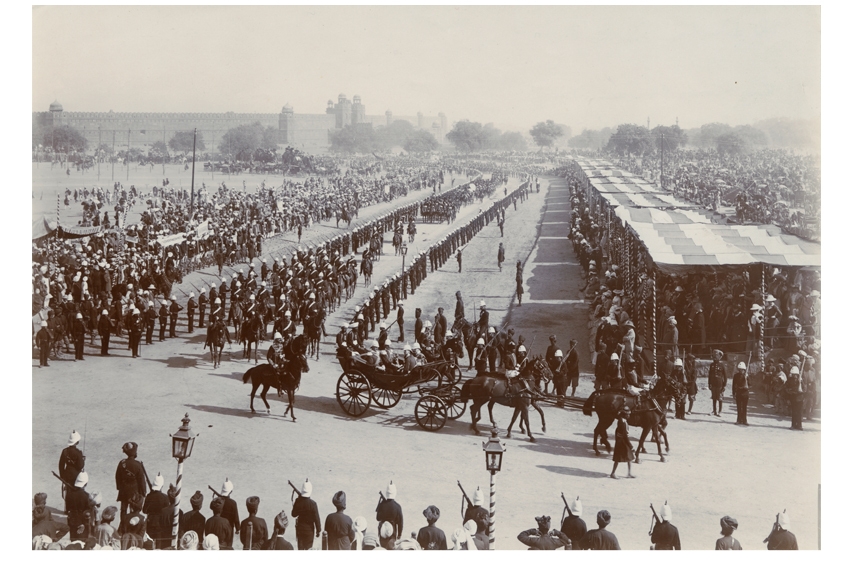Jessica Douglas-Home’s aptly titled book is based on the diaries of her grandmother Lilah Wingfield, who attended the Delhi Durbar in 1911 and then spent some weeks touring India. It is a glimpse of Empire from a privileged position since Lilah was the daughter of a viscount and the grand-daughter of an earl, brought up at Powerscourt Castle in Ireland and spending her summers at Holkham Hall in Norfolk. She sat in the grandstand for ‘Distinguished Spectators’ at the Durbar and was the guest of several Indian rulers during her tour. She did not, however, ‘share the assumption of superiority that afflicted many of the officials of the Raj’, her granddaughter writes. ‘She was too Irish for that.’
The recently crowned George V was the first British monarch to visit India, and the Durbar had been arranged so that the rulers of the country’s princely states (over which the British held suzerainty) could pay public homage to their new King-Emperor. This was the Raj at its zenith. A vast tented city covering some 25 square miles had been erected outside Delhi, complete with its own narrow-gauge railway, metalled roads, shops, hospitals, post office, dairy and polo ground. Those Indian princes considered most loyal to the crown were allotted encampments closest to the Royal Camp, which stood in a 35-acre garden.
Others had a more equivocal relationship, and the Gaekwar of Baroda caused widespread outrage by failing to follow protocol during the Durbar itself. Rather than making proper obeisance and walking backwards seven paces before leaving the arena, he ‘made a cursory bow from the waist, stepped back, and then, wheeling around, turned his back on the royal couple and walked away from their presence nonchalantly twirling a gold-topped walking stick’.
Douglas-Home is very good on such details as this, the priapic displays of the Maharaja of Patiala, and the extraordinary lengths the Viceroy went to in order to ensure that the procession of King and Queen through the centre of Delhi should pass off without incident. What her book lacks is any solid historical context. It does not matter that for Lilah the Durbar was ‘less a political event than a gorgeous pageant’, but we need rather more from Douglas-Home. She refers to the King’s crucial proclamation that ‘the partition of Bengal (the least popular of Lord Curzon’s measures) was to be annulled’ without any further explanation, for example, and is shaky on detail.
She seems unaware that the rulers of Muslim states such as Rampur and Bahawalpur (which she misspells) were called nawabs, not ‘maharajas’, and is simply wrong when she writes that ‘India’s capital would be returned from Calcutta to Delhi’. Although Delhi had been capital of the Mughal Empire, it had never been capital of India, or indeed of British India — which is what it in fact became in 1912.
As an eyewitness account of the Durbar and the courts of various Indian rulers, however, this generously illustrated book is of some historical interest. Although Lilah is very much of her class and period, her refreshing determination, like that of E. M. Forster’s Adela Quested, to see ‘the real India’ gives her diaries a genuine distinction.






Comments